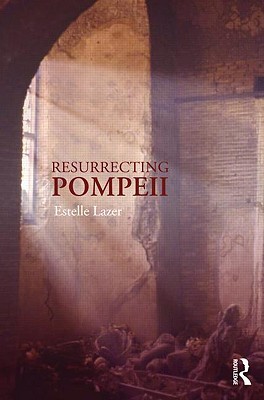Resurrecting Pompeii: The Testimony of Skeletons

It’s amazing what bones will tell you if you know what questions to ask. Dr. Estelle Lazer spent years making inquiries of the skeletons of Pompeii, and her Resurrecting Pompeii is filled with their stories.
This is an academic work, written in academic language, so please don’t go into it expecting an easy, breezy read. There isn’t a ton of geology involved, either. You’re going to be encountering more anatomy and pathology than you might have been strictly prepared for. But if you want to see a lot of myths busted, and learn who the people trapped in Pompeii by the eruption were, this book will more than repay all the time you spend googling unfamiliar terms.
You’ll also get a very good look at what happens to people when stratovolcanoes happen to them. A strong stomach is recommended.
There are a lot of stories in this book. There’s the story of the AD 79 eruption, and how the people still in the city were killed. There’s the story of Pompeii’s discovery, and how human remains were staged, treated, and mistreated (Dr. Lazer couldn’t study many femurs, for instance, because they’d been turned into actual hinges for furniture). And there’s the story of the lives of those people, told by the signs of health, injury, healing, and disease recorded by their bones.
Geologists know that a rock ripped from its context can’t tell us anywhere near as much as a rock carefully preserved in its original context. The same is true of skeletons, and for decades, they were treated as curiosities only. But Dr. Lazer’s patient, painstaking work shows how much information can be gleaned even from disarticulated, scattered remains. From piles of bones, she’s able to reconstruct an appreciable portion of an ancient city. And through her careful efforts, we’re able to piece together mosaics of their lives. The doctors’ instruments found in the ashes suddenly become more than inert artefacts when we see people with the injuries and diseases they treated.

Bronze scalpels and tweezers from a doctor’s kit in Pompeii. These items were featured in Pompeii: The Exhibition. Credit: Dana Hunter
We can feel the grit in our teeth from stone-ground grain, and the pain from surfaces worn to the nerve. We feel the effects of youthful misadventures, occupational injuries, and advanced age. But we also feel the bloom of health, of a varied diet and an active life. The testimony of the bones helps us better imagine what Pompeiian lives were like before they were so abruptly ended.
This book is a tough slog at times, and I would have liked a much more expanded section on the effects of the eruption on the people who were caught in disaster. But it’s an intriguing look at not only what it was like to live in Pompeii from a bones-eye view, but also an excellent example of what forensic archaeology can add to the historical record.
It’s a good volume to devour alongside Mary Beard’s excellent The Fires of Vesuvius.
If you want to understand Pompeii more profoundly, this is definitely a book you’ll want to add to your collection.

Rosetta Stones and Dana Hunter’s Unconformity wouldn’t be possible without you! If you like my content, there are many ways to show your support.
This website is a member of the Amazon Affiliates program. I get a small commission when you use my affiliate link to make a purchase.
Thank you so much for your support!




